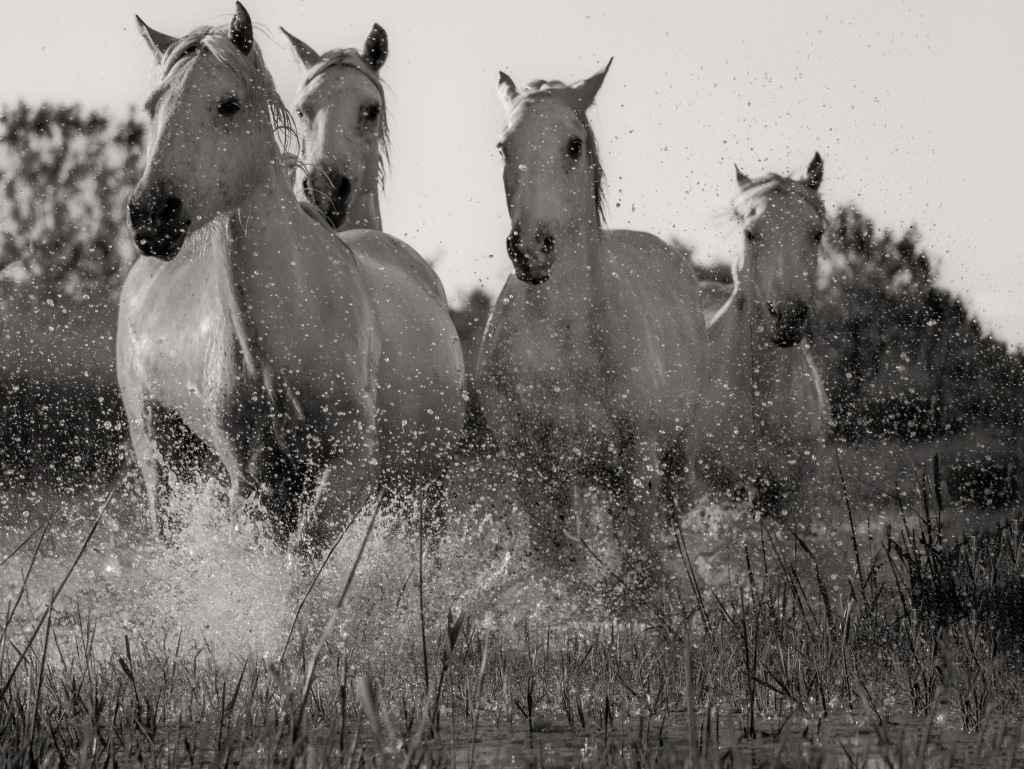I’m not your typical sports fan. In fact, I’m really not much of a sports fan at all. Except when it comes to my two boys. I’m the embarrassing Mom who cheers passionately for their soccer, track, basketball or football teams while aggressively elbowing aside other parents to snap photos on my Nikon.
To be sure, there have been times when my sons’ sports interests have aligned with my career in hedge funds. For example, when 13-year old Matthew got drafted for David Einhorn’s Harry’s Burritos basketball team two years ago. It was thrilling to get Einhorn’s detailed post-game analysis direct from Greenlight Capital. He was an incredibly dedicated coach, the kind of guy who not only taught the team cool, strategic plays and encouraged the slackers to excel but also once waited with my son outside the Larchmont gym in the freezing cold for 20 minutes until I belatedly swung by to collect my offspring.
No-one was surprised when the Burritos won the league championships that season. David Einhorn is a winning coach, in addition to being a pretty amazing hedge fund manager and poker player.
Back to our story. I hadn’t gone to a pro basketball game in decades. But last week I found myself at the Garden watching the Knicks get utterly destroyed by the Houston Rockets and loving every single minute.
Here’s how it happened. I discovered through the parent grapevine that other perfectly normal homework abiding families take their kids to pro basketball games on school nights. My husband and our 15-year old Grant were invited by another dad to see a Nets game in December. They loved it. It was a night out. The action was fast paced. They spotted a bunch of other kids from their school across the court and several celebrities in the stands. There was ice cream and popcorn to be had at the concessions.
I started thinking, why not go to a Knicks game as a family? So what if they stink. This is about New York spirit. And getting everyone out of the house, away from their computers on a frozen January night.
Happily the Knicks’ dismal record this year presents the casual ticket buyer with a cornucopia of choice seats on StubHub. The prices are still ridiculous – it’s NY – but the markups for really good seats have deflated from Crazy Eddie certifiably insane to almost tolerable. (Don’t worry if you don’t get the Crazy Eddie reference, it’s a 70’s thing.)
So last week, I picked Grant and Matthew up at Horace Mann, rendezvoued for dinner at Brother Jimmy’s with husband David, stepdaughter Michele and her boyfriend Nick, and spent the evening at Madison Square Garden cheering on the Knicks, drinking $11 beers and doing everything possible to catch a tee shirt hurled into the stands by the Knicks crowd-warming events staff.
I’m ashamed to admit this was my first time at the Garden to watch a basketball game. A frequent habituant of the Garden in earlier years for pleasing, albeit deafening concerts from the Who to the Dead, I’ve slacked off in recent decades and now go to just a handful of shows a year. The grimy escalators, crushing hordes of people and general concrete vibe make MSG one of my least favorite music venues. A brief, depressing stroll through the adjoining underground commuter post-industrial wasteland otherwise known as Penn Station is sufficient to dampen anyone’s enthusiasm. The Beacon on the Upper West Side provides a superior musical experience, as fans making annual pilgrimages to catch the Allman Brothers readily attest to. The more intimate and, for Westchester residents, geographically desirable Capital Theater in Port Chester and the nostalgically charming and cheap Tarrytown Music Hall have better acoustics, and honestly no bad sight lines wherever you end up.
But even my few recent jaunts to the Garden prior to last week’s Knicks game have been special experiences. The 2009 star saturated marathon two day Rock and Roll Hall of Fame 25th Anniversary extravaganza was beyond fantastic. I loved seeing the sultry voiced Stevie Nicks swirling to Rhiannon a few years ago, several decades post Rumours. Billy Joel’s shows are sacred ground for New Yorkers who grew up in the 70’s. Ditto for Paul Simon, the quintessential cool, hip, sarcastic yet soulful New Yorker. There’s nothing cheesy about the whole Garden singing along to Sounds of Silence. And happily a business trip interfered with taking my younger son to see Robin Thicke last year, which would have been the only sour note in the lot. (David went and was underwhelmed)
But I digress. This is about sports, and specifically, the Knicks.
Over pre-game ribs and margaritas at Brother Jimmy’s, the extended Kaufman family reviewed the sorry state of NY sports fans. I didn’t quite realize how bad things had gotten. In football, both the Jets and the Giants have had lousy seasons. In baseball, A-Rod was suspended for drug-related reasons. The Yankees failed to make the playoffs. And then there are the Knicks, who currently hold the distinction of being the worst team in the league. At this juncture, they’d lost all but 5 of their 40 games. Star Carmelo Anthony needs knee surgery and the rest of the starters are sidelined. The team has failed to develop younger players into the new generation of stars. There’s been a failure of leadership. Of coaching. Of talent. Of skill.
The high spirits at dinner turned more sober as we got closer to leaving for the game across the street. Brother Jimmy’s ribs were delicious but the margaritas were cloyingly sweet. We were going to watch a lousy team lose big. It was going to be a downer of an evening. Expensive too. Why were we bothering?
Yet from the minute we stepped into the Garden, it was bright lights big city glitzy fun. Well, almost. First we had to navigate through the sullen neon and linoleum vibe of Penn Station and make it up to the arena’s main entrance, then survive the trifecta of MSG Security: the full body pat down, the up close and personal scrutiny by a drug sniffing dog, and the final humiliation, the Poland Spring water bottle confiscation. (Just watch, xray screening and shoe removal is coming next).
Once inside and settled into our seats we were bombarded with NY team spirit. A happy, mostly white crowd bedecked in orange and blue Knicks jerseys, tee shirts and hats filled the stands. Lots of Dads and sons. Couples out on dates, some of whom were later called out by the official MSG Kiss Cam (more on that later). The Knicks retinue of warm up staffers rambled around the stadium throwing Knicks-branded goodies to the excited crowd. Upbeat music streamed out of the excellent speaker system.
The concession stands had undergone a gourmet upgrade since last I visited. There were tacos from Jean Georges Vongerichten and burgers by Drew Nieporent. Defying worldwide economic deflationary trends, food prices tat the Garden have soared in recent times. Replacing that confiscated fresh from Maine Poland Spring bottle with a like sized bottle of purified Dasani tap water cost $5.50. The concession ladies insisted on keeping the cap, which must either be some weird security measure or a pointless way of preventing consumers from enjoying their Dasani post-game. (Note to self: bring spare Dasani water bottle cap to next event at MSG.) Every time I gave my kids a $20 for a pretzel and soda they came back without any change.
But then the game began and the action was fast paced and infectious. Every Knicks basket was met with wild applause and joy. So many gorgeous 3-pointer shots – when did the game start revolving around those? Not a lot of close court battling and dunking, except for the official Dunker Championship Playoff contest in between quarters.
But something about the team was off. They trailed the Rockets from the get go. All of their stats posted on the big board painted a nuanced numerical picture of mediocrity.
No wonder the Knicks were in last place.
But amazingly everyone seemed to be having a great time. The Knicks staff kept an upbeat tempo during breaks with contests and more crowd give-aways. First up was a shuffleboard standoff. This was no blue-plate Miami Beach special. The stakes were big. A trip to London for two.
To our surprise, the first contestant called down to the floor was a friend of ours, another school parent – the very one who had taken the guys to that Nets game a few weeks back. “Dean!! You rock!” we all shouted, as he stepped up to the shuffleboard puck. And he won, armed with superior shuffleboard skill, easily trouncing his opponent. We all felt bad for his fellow contestant, a pleasant looking woman in her 40’s. But then, it was announced that she would also get the same prize. The crowd cheered. Nice touch. Everyone’s a winner.
This was turning into a great evening.
As the numbers on the scoreboard climbed and the Knicks’ margin of loss widened, the carefully choreographed fun continued. First, the aforementioned dunking contest. Let me refer to it by it’s proper copyrighted name, for this was no mere dribble and dunk one on one. This was The Sprite Slam Dunk Showdown, the “premier amateur dunk contest”, according to its official Facebook page.
Two talented dunkers competed for best in show. We watched as former Harlem Globetrotter Leon “Space Jam” Sewell eviscerated “Los Smothers”. Not the most exciting display of dunking talent, according to my group. It seemed a little manufactured and over hyped. The crowd yawned.
But then we were inspired to cheer once again as the Douglas Elliman Celebrity Row close-up camera zoomed in on the one and only Daryl Strawberry. We were definitely sitting amongst the gods. Later in the game, we cheered every time the Elliman camera showcased another celebrity, even some minor actor from the Sopranos whom I’d never heard of. It was a good distraction from the terrible game being played by the Knicks, and confirmed to our smug satisfaction that we were indeed privileged New Yorkers, spending the evening with talented stars from the sports world (in the stands, not on the court) and miscellaneous actors.
Next up was the Kiss Cam. SO cute. A couple out on date night watch the screen as the camera pans the stadium and zoom up to land on their own faces, at which point they are supposed to respond with intense excitement and delight, then turn to each other and smooch. Good clean fun.
Until we witnessed the controversial incident which made the news the next day.
“Kiss Cam Takes Crazy Turn At Knicks Game As Girl Smooches Total Stranger” www.huffingtonpost.com/2015/01/12/kiss-cam-knicks_n_6453928.html
Yes, sports fans. The girl’s date was busy texting on his iPhone and couldn’t be bothered to look up at the screen or respond to her urgent arm shaking. But she felt the crowd’s pressure to come through with a kiss. So she grabbed the guy sitting next to her and assaulted his lips.
Huffington Post’s Ed Mazza deemed it “possibly the best thing at any Knicks game, all season” but wondered if perhaps the incident had been staged.
In fact, while I was excitedly patting my husband’s arm saying “awwww how sweet”, I heard various people around us mutter “staged”. Matthew turned to me with one of his world weary Mom-you’re disappointing/embarrasing-me expressions and set me straight. “Mom, get real, a lot of these things are staged so they’ll go viral.”
I generally have a hard time winning arguments with Matthew as he’s inherited my Dad’s litigator genes, so I shut up. For the last word on this topic, I turn once more to HuffPost’s Ed Mazza, who writes that if this Kiss Cam incident turns out to have been staged, “it’s still a better performance than anything the team has managed to put together this year.”
To be sure, the Knicks ended up losing to the Houston Rockets by a score of 120-96, cementing their last place status.
We left in the middle of the 4th quarter, not because of the crowds but rather because I looked at my watch and saw that it was way past bedtime for my 8th and 9th graders. Michele and Nick stayed behind to cheer on the losing Knicks, reveling in every basket.














